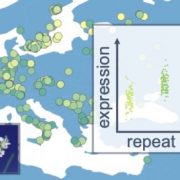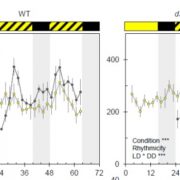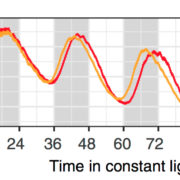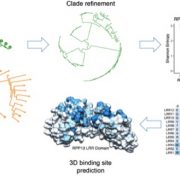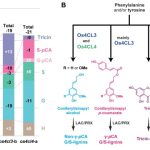Tick tock: TIME FOR COFFEE regulates far-red light inhibited hypocotyl growth
Wang et al. explore how the circadian clock regulates phytochrome A abundance and activity to mediate far-red light inhibited hypocotyl growth.
Background: To enhance plant adaptability to natural conditions, the circadian clock is synchronized and entrained by light via photoreceptors. Intriguingly, the circadian clock also fine-tunes the abundance and activity of photoreceptors. The photoreceptor phyA accumulates during the night with a peak at dawn, followed by decreasing levels from dawn to dusk, suggesting that the circadian clock plays an indispensable role in regulating phyA accumulation. However, the underlying mechanism is unclear. TIME FOR COFFEE (TIC) was characterized as a clock regulator in Arabidopsis thaliana with a peak signaling function prior to dawn and was proposed to modulate light input to the clock at pre-dawn.
Question: We tried to fill in the gaps in our understanding of how the circadian clock exquisitely regulates photoreceptors. We tested whether the clock regulator TIC regulates phyA abundance and activity and unmasked the underlying mechanisms.
Findings: Arabidopsis tic mutants exhibit significantly reduced hypocotyl length in a range of continuous far-red fluences, suggesting they are hypersensitive to far-red light. PHYA and FAR-RED-ELONGATED HYPOCOTYL1-LIKE/FAR-RED ELONGATED HYPOCOTYL1, the key components of the far-red signaling pathway, were upregulated in tic mutants at pre-dawn. TIC recruits the transcriptional co-repressor TOPLESS to bind to the PHYA promoter to inhibit its pre-dawn transcriptional expression. In addition, TIC physically interacts with phyA in the nucleus to promote its proteolysis following light irradiation. TIC also regulates phyA photobody formation in far-red light. Therefore, the clock component TIC functions as a major negative regulator of phyA by integrating transcriptional and post-translational mechanisms.
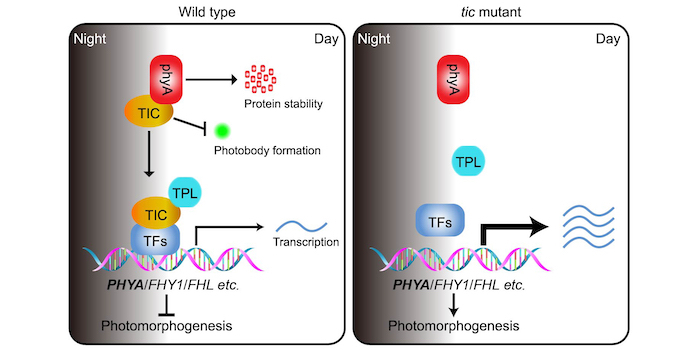
Next steps: TIC might function as an emerging cellular hub, integrating environmental information and regulating plant growth. However, the biological function of TIC is still unclear, and the underlying mechanisms of how TIC coordinates with diverse proteins to regulate plant growth and development need to be further investigated.
Reference:
Yan Wang, Chen Su, Yingjun Yu, Yuqing He, Hua Wei, Na Li, Hong Li, Jie Duan, Bin Li, Jigang Li, Seth J. Davis, and Lei Wang (2022). TIME FOR COFFEE regulates phytochrome A-mediated hypocotyl growth through dawn-phased signaling. https://doi.org/10.1093/plcell/koac138



